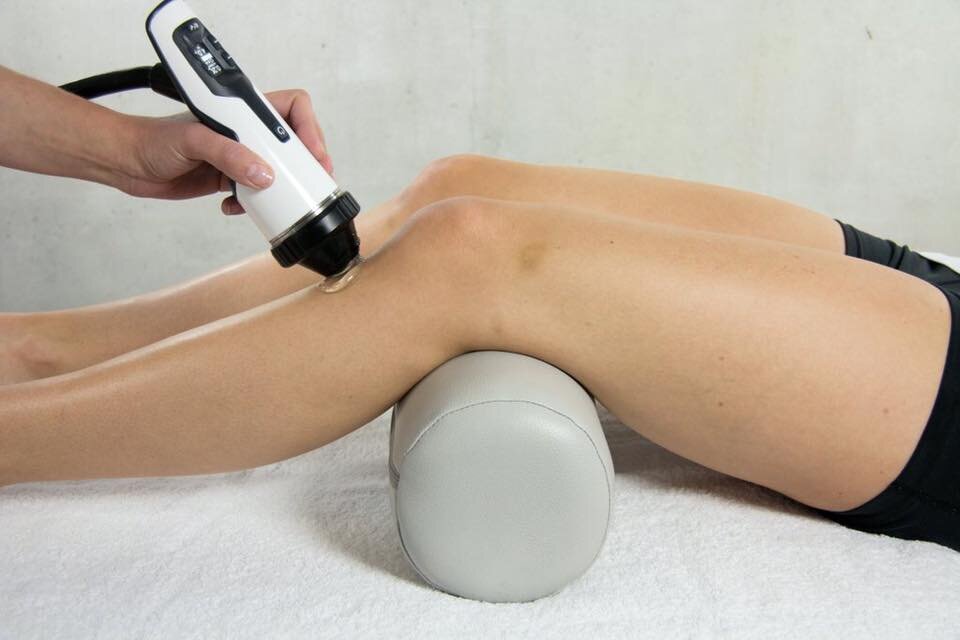Patellar Tendinopathy responds well to focused shockwave therapy, this condition is also called jumpers knee, it’s a painful condition occurring at a point just below the knee cap.
Symptoms
The main symptoms are pain and aching just below the kneecap in and around where the tendon inserts onto the tibial tuberosity. Often the pain develops with activity but as time goes by it becomes more constant.
Causes
It’s unclear why this condition occurs but it is an overuse injury mean it can develop as a result of repeated stress being place upon the tendon. Although people who jump such as basketball or volley ball players due to the strain when landing it can also be caused by over training on hard surfaces.
Treatment
Focused Shockwave therapy helps with Patellar Tendinopathy by creating a micro trauma to the area, increasing blood circulation and cell activity. The focused shockwave treatment results in new blood vessel formation and an increase delivery of nutrients thus relieving the symptoms of pain. Along with osteopathic manual therapy of the associated areas and treatment plan you will have an outstanding chance of getting out of discomfort quickly and back to enjoying a pain free life.
WHAT ARE SHOCKWAVES?
Focused shockwaves are are generated electromagnetically through a cylindrical coil which creates opposing magnetic fields when current is applied. In the medical world, shock waves have been used since 1980 to disintegrate kidney stones, for instance. In modern pain therapy, shock wave energy is applied to the painful body regions, where it can exert its curative action.
WHAT DOES IT DO?
Shock waves can accelerate the healing process in the body, they stimulate metabolism and improve blood circulation; damaged tissue can regenerate and fully hea
IS IT SAFE?
Treatment is non-invasive, quick and effective, and has been deemed a safe treatment by the National Institute of Health and Care Excellence (the body that determines best practice within the NHS). No anaesthetic is required, and the patient doesn’t face a lengthy rehabilitation.

